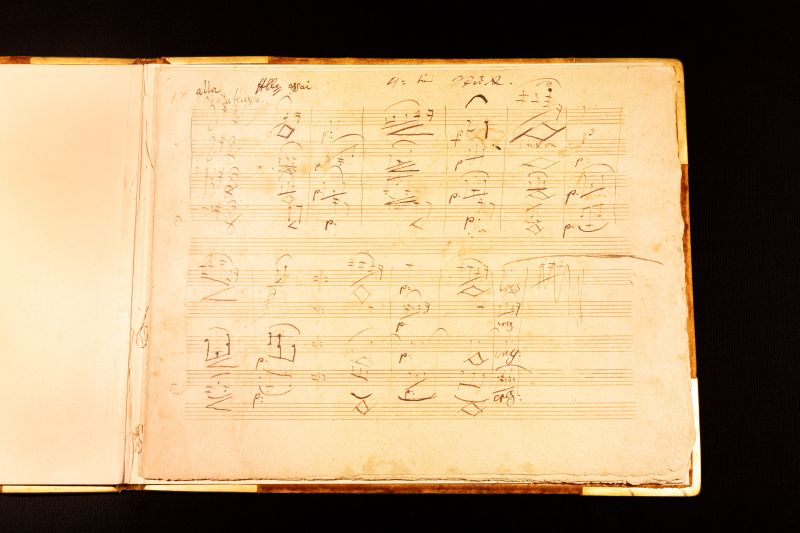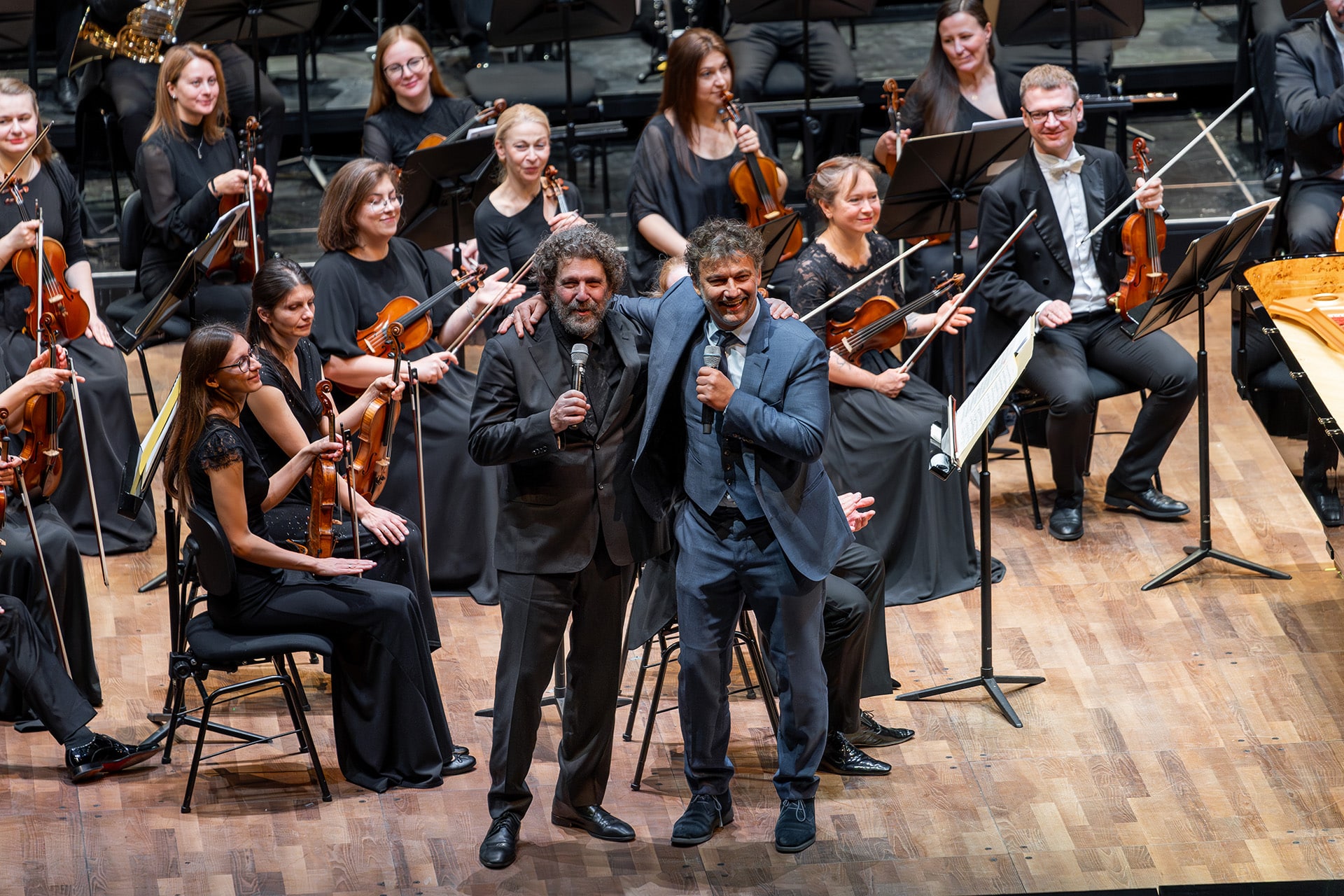Rite has been played 'wrong' since before Stravinsky died
UncategorizedA musician in Exeter claims to have found a critical error in the current edition of the published score of Stravinsky’s Rite of Spring. Marion Wood says one timpani part is missing in The Glorification of the Chosen One section, and what ought to be ping-pong between two timps is mostly played nowadays as a monologue. It has been that way, she says, since the present score was printed in 1967.
The publisher, Boosey & Hawkes, has promised to look into it.
The research shouldn’t take them long. There are two recordings of the work by Stravinsky himself and at least three by Pierre Monteux, who conducted the uproarious first performance in Paris in May 1913. 
Ms Wood will perform the Rite the correct way next Thursday.






I know of at least one more important misprint in a 20th century composition. There is a prominent passage in the Berg Violin Concerto that was printed a 4th away from the correct pitch. The misprint has been recorded by Anne-Sophie Mutter among others. I believe it was George Perle who revealed the misprint in an article published decades ago.
I talked about this in more detail here: http://themusicsalon.blogspot.com/2011/09/composers-and-musicologists.html
Dear Norman,Bryan Townsend & Mr.Anonymous. It would be usefull & interesting to know the exact details of where & what the mistake is in Berg’s Violin Concerto score.! Details please. As to the problem of Stravinsky’s “Rite”. If my memory serves me correctly ,Boulez created an Errata sheet of over 200 Notation & Transposition mistakes which he found in the score whilst preparing to conduct & to eventually record it in the 60’s,which “Boosey’s ” received, & was met with Stravinsky’s approval.Thus in one swipe in many ways disqualifying all previous performances & recordings of the piece by such then Illuminaries as Pierre Monteaux, Ernest Ensermet,& the composer Stravinsky himself. It caused consternation & scandal. How can things like that happen when composer & performer havn’t done their homework properly ? We are living in such a Jet Set Age even more so today ,of overmarketing ourselves & others , plus a great element of sheer Greed, that there is inadequate time left for thorough Scholarship & Analysis of the works that one has to present in concert, plus too short rehearsal time. It would be advisable for Ms Wood in Exeter to consult Boulez personally before it’s too late,as he’s 86 years, & not getting any younger,& then afterwards consulting the Stravinsky Lectorat & expert at Boosey’s, thus getting the great wisdom & knowledge of Boulez from the “Horses Mouth “,so to speak. I attended with Boulez together the 50th Anniversary of the premier in Paris,this time in London at the RFH,with the ageing Monteaux again conducting. We sat next to Stravinsky & his friend Robert Craft. On another occasion the singer Raymond Herynix discovered a wrong note in “Oedipus Rex”, & wrote to Stravinsky asking permission to change it. Stravinsky’s lawyers in New York wrote back replying approx. Yes, in principal Stravinsky agrees,but please send first to our office the sum of 500 Dollars. – Very Materialistic ! The singer was so shocked & outraged by the responce,that he left it as it was & didn’t change it. I presume that Stravinsky on the one hand was for once thankfull to Boulez for his trouble,& on the other hand too embarrassed to charge Boulez money & sending him a bill due to so many mistakes ! Not many composers & conductors have such good ears as Boulez or Klemperer. I only remember on one occasion when Boulez overlooked a mistake which was, & still is unheard of, during a rehearsal,& that was when he was rehearsing his own composition “Pli selon Pli ” (Fold upon Fold) at the RFH in London in the 60’s, when Otto Klemperer who was allways attending Boulez’s rehearsals & Concerts with his daughter Lotte,when suddenly Klemperer somewhat taken aback whilst following the music from his own score,in his well meaning but excentric way, said out aloud in German ” Das kann doch nicht wahr sein Lotte,er hat ein fehler gemacht (it can’t be possible Lotte,he’s made a mistake ) & followed it by interrupting Boulez saying to him in German Herr Boulez ,it’s a flat not a natural. Meaning that a woodwind player played a wrong note,to which Boulez checked the orchestral part,discovering with Klemperer’s help that the copyist had made a written mistake. It was for me at the time as a young composer amazing that the aged & half paralysed Klemperer could hear so transparently through Boulez’s frighteningly difficult Laberinthine Complexity of Ultra Polyphony. An other composer Henze, many years ago was rehearsing & trying his best to conduct his own music here in Munich, & it wasn’t at all going well,so the orchestra like naughty children decided to play him a few nasty tricks ,& put him to the Test, by making transposition mistakes as well as playing wrong notes. Henze’s only reaction was by complimenting the orchestra on their inspired poetical playing, & that he’d never heard it played so well before ! What can one say or add to that,except that there are other many “Head & Brain burdened composers(forgetting that Brain must be in balance with Heart, Soul, Spirit,& Abdomen) trying their utmost to be real intellectuals , & to out modernize everything that’s been heard or composed before,& not writing properly for the instruments way out of the instruments possible range, & without having their own individual recognisable music language, jumping on the band waggon of fashionable trends,perhaps receiving only3 performances maybe in Darmstadt,Donaueschingen,& some other incestuous so called avant garde venues for the Initiated Deaf Mafiousi ! Then they put it in the Draw or on the shelf & is forgotten,with the life expectency of a one day flee,here today & gone tomorrow. At the end of the day, ” No Ears & nothing between the Ears “.There are thank God many like J S Bach who had a tremendous knowledge, & Mozart etc OK ,in ancient Times it was normal to be inspired by other composers of the past or present ,& one borrowed or took (or stole from others ) as did Bach from Vivaldi etc,or Mozart from Joh.Chr. Bach in his first Piano Concertos & also took from Franz Danzi etc- Today there are very narrow inflexible Laws,strict Laws about Plagiarism, Or taking,borrowing,stealing,or just quoting an other man’s creative work. We composers have as nature is, our Family trees & Musical Roots. Consider well the Symphonic Hereditary line of Beethoven,Brahms,Mahler,& Schostakovitch, & the swedish composer Allan Petterson. One without the other is unthinkable ! or Bach, Chopin, Rachmaninov (see his Chopin Variations op.22 & you’ll discover much of Bach’s counterpoint & Polyphony),or another example of Bach,Liszt, & Busoni. etc etc.We all have our Great,Great,Grandparents through to our children & great grandchildren. Therefore occurs the very logical questionable thoughts & assumptions about “Spiritual Property”. Can one own an Idea ? or is Spiritual Property perhaps a form of Capitalistic Excess ? – As for mistakes & wrong notes,play them with fervour 6 inspired conviction ! Nobody is perfect or infallible. We all make them. Some of us are often revising, & are re- thinking,changing. I learnt that from Bach who was continually doing it,also from Chopin who got very impatient & exasperated with his publishers & lectorate who kept on pesterering him with Questions as to what notes they should print as he changed his mind from performance to performance,allways creating new improvisory moments to the original very different first few performances, Chopin then telling them in a bad temper to print what they want to ,but they shouldn’t bother him any more & to leave him alone. That’s one good reason why ,in my opinion that there cannot be a so called “Urtext “edition of Chopin’s Music,contrary to what one publisher has been telling us ,& printing for years. So be carefull you so called ” Urtext Apostles ” ! Similarly i learnt from & with Pierre Boulez, that’s why he terms his compositions as ” Works in Progress.” He has in the last 50 odd years revised & changed his “Pli selon Pli “over 4 times. I think that each version though is Valid. – There are though a few Musicians ,Composers,who greatly admire & appreciate Learnedness. The time when one thinks that one can’t learn any more is the time for us to bid our farewells to this world. Yes ,there are some teachers & critics who think that they know better than composers who, like Eunachs, think that they know how,but when it comes down to the crunch, can’t ! As Sibelius put it, there hasn’t been any Monuments or Statures created for such people,but only for Composers,Painters, Poets & Writers. Creative People. Sincerely. Dafydd Llywelyn.
PS: With apologies for my forgetfullness.I’ve been composing this Epistle all night instead of composing, & i’m somewhat tired. The great New England visionary composer Charles Ives remarked.” Music begins with the Ears, & ends with the Ears.” – D L.
The 1967 the score actually makes quite explicit that the D# and F# are played by two different players since each note is written on a separate staff. However, in the 1967 score, a note makes it quite clear that unless otherwise indicated, the division of labor between the two players is up to the players, which therefore suggests that an antiphonal effect was not at the forefront of Stravinsky’s mind. If so, and the players are grouped together over their minimum of 5 timpani, would one be able to really tell – at least in recording – if the measures in question were played by one person, or divided between them as indicated in the score?
What is more pressing, however, is the fact that despite being one of the monuments of 20th century music, the Rite of Spring (like almost all of Stravinsky’s music) still lacks a scholarly edition. T
The Rite of Spring exists in a multitude of versions and variants. First, there was the version of the 1913 premiere, then there is the first published version (1921) a revision of 1913 to which Stravinsky made further changes and corrections over the years. This was the version Boosey reprinted after the work was assigned to them WWII. Then, there is the complete – and simplified – re-scoring of the Danse Sacrale, published in the 1940s by Associated Music Publishers and performed by Stravinsky ever since. This was the remnant of Stravinsky’s initial desire to re-score the entire work, as he had done with Petrouchka in 1943.
When Boosey issued the new re-engraved edition in 1967, which is based on the 1921 version with further corrections and changes, they didn’t include the 1940s recomposed Danse Sacrale. So there is actually no single edition of the work that reflects Stravinsky’s last revisions of the entire score, nor is there a clean and corrected version of any of these publications, which are riddled with errors of commission and omission.
Recordings of the work reflect all three versions and variants thereof. Most conductors ignore (wisely, I think) the 1940s re-scoring due to the clash of styles between the two. Until the late ’60s, most conductors relied on the 1921 with or without corrections, and then later, the 1967 became popular. Some – I believe Boulez, goes back to the original 1913 version.
So, for many reasons, there is no “correct” score.
Dan P.
Dan. P, you’re right. As a professional timpanist, I can assure Ms. Wood that the timpani parts for the Rite are and always have been divided up by the players depending on such constraints as space and the number of instruments available. The only places where two (and at one point three) timpanists are definitely required are where it is physically impossible for one alone to play all the notes. The fact that certain notes have been written out on a seperate stave in certain editions means nothing: Stravinsky’s timpani and percussion parts are littered with bizarre copying and engraving foibles. When he was shown the published percussion part for “l’Histoire du Soldat” with its absurd separate stave for each instrument he reportedly said, “I didn’t write that”. He didn’t write Ms. Wood’s tennis match either.
Yes, the old parts for L’Histoire are a real mess – including, if I remember, missing time signature changes and no cues. I don’t know if Chester issued new parts with their new edition. I haven’t performed it since then. That none of the publishers who made lots of money from Stravinsky’s scores cared enough to invest a penny into producing correct editions – mostly Chester and Boosey – shows, I think. what they ultimately cared about.
Dan P.
Stravinsky formally recorded “Sacre” three times — the first, in Paris, in 1929; the second, with the New York Philharmonic, in April 1940, at Carnegie Hall (never formally reissued on CD by the owner of the recording, Sony/BMG); and the third, in January 1960, with a recording orchestra, at the ballroom of the St. George Hotel, Brooklyn (which has been reissued on CD by Sony several times).
Moreover, there is a live Stockholm performance, with a rehearsal recording, from 1962, that has been issued on LP by Music and Arts.
Dan P. writes: “Then, there is the complete – and simplified – re-scoring of the Danse Sacrale….”
Anyone who visited the Toscanini/50th anniversary (death) exhibit at the NYPL four years also saw Toscanini’s revision of the “Danse Sacrale”, which went on for several pages at the end. He never conducted the work, but I found it interesting that he went through such care to examine this work.
Thanks for that – I missed the exhibit and was unaware of his interest in the Rite of Spring, but that doesn’t surprise me. I read somewhere that when Stokowski rehearsed the Berg Violin Concerto with Szigeti and the NBC Symphony, Toscanini was right there at the rehearsals at the rehearsals, score at hand, following very closely.
Dan P. writes: “I read somewhere that when Stokowski rehearsed the Berg Violin Concerto with Szigeti and the NBC Symphony….”
Actually, it was Dimitri Mitropoulos. And yes, AT was in the control room, listening to the rehearsals.